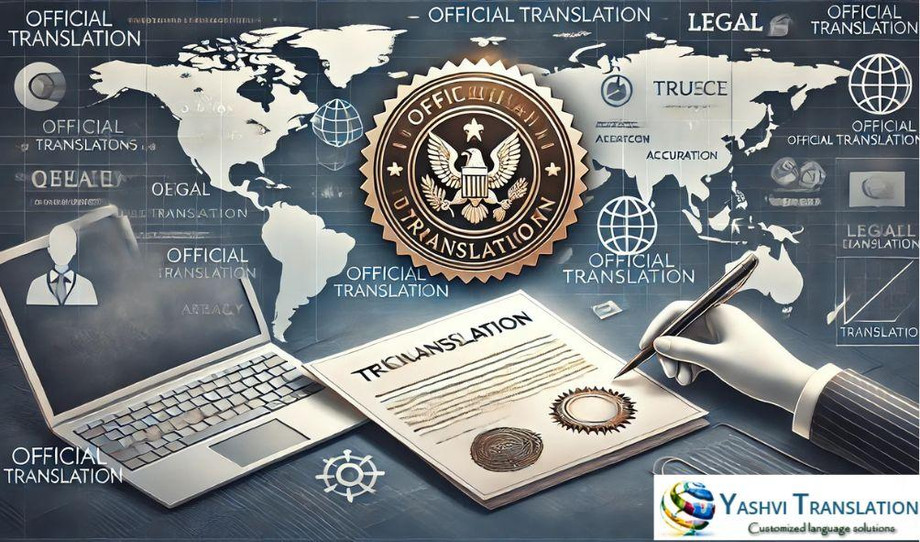Ever needed a document translated for legal, immigration, or academic purposes abroad? You've likely stumbled upon the phrase "official translation." But what exactly does that mean, and how does it differ from a regular translation? More importantly, how do you ensure your translated documents are accepted in different countries? Let's dive into the world of official translation and demystify the requirements across various regions.
Why "Official" Matters: Understanding the Need for Certification
Simply put, an official translation is a translation that's been certified or notarized to guarantee its accuracy and authenticity. It's not just about converting words from one language to another; it's about providing a legally valid document. This is crucial when dealing with sensitive information like birth certificates, marriage licenses, academic transcripts, or legal contracts.
Governments, courts, and educational institutions often require official translations to prevent fraud and ensure that the translated document accurately reflects the original. This is where the complexities of official translation arise, as requirements vary significantly from country to country.
The United States: Notarization vs. Certification
In the U.S., the terms "certified translation" and "notarized translation" are often used interchangeably, but they have distinct meanings.
- Certified Translation: A certified translation comes with a signed statement from the translator or translation agency, attesting to the accuracy and completeness of the translation.1 This statement typically includes the translator's qualifications and contact information.
- Notarized Translation: A notarized translation involves a notary public verifying the translator's signature on the certification statement. The notary doesn't vouch for the accuracy of the translation itself, but rather confirms the identity of the person signing the document.
For most official purposes in the U.S., a certified translation is sufficient. However, certain situations, such as legal proceedings, may require a notarized translation.
The United Kingdom: Certified Translations and "Sworn Translators"
The U.K. also relies on certified translations. A certified translation in the U.K. usually includes:
- The translator's or translation company's official stamp and contact details.
- A statement confirming the translation's accuracy.
- The date of the translation.
While the U.K. doesn't have a formal "sworn translator" system like some European countries, some professional translators may be members of organizations like the Institute of Translation and Interpreting (ITI), which adds credibility to their work.
Canada: Certified Translations by Certified Translators
In Canada, the requirements for official translation are more stringent. Many provinces require translations to be performed by certified translators who are members of provincial regulatory bodies. These certified translators must pass rigorous exams to demonstrate their proficiency.
A certified translation in Canada will typically include the translator's certification number and the seal of the regulatory body.
The European Union: Sworn Translators and Apostilles
The EU presents a diverse landscape of official translation requirements. Many EU countries have a system of "sworn translators" who are appointed by the courts. These translators are considered experts in legal translation and their work carries significant weight.
In addition to sworn translations, an apostille may be required. An apostille is a certificate that authenticates the origin of a public document, making it valid in other countries that are signatories to the Hague Apostille Convention.
Other Regions: Navigating Local Requirements
Beyond these major regions, official translation requirements can vary significantly. It's crucial to research the specific requirements of the country where you intend to use the translated document.
Here are some general tips:
- Contact the relevant authorities: Reach out to the embassy, consulate, or government agency of the country in question for specific guidance.
- Work with reputable translation agencies: Professional translation agencies specializing in official translation are familiar with the requirements of different countries and can ensure your documents are properly certified.
- Check for specific formatting requirements: Some countries may have specific formatting requirements for translated documents, such as the font, margins, or paper size.
Finding the Right "Officials Translation" Service
When searching for an officials translation service, look for:
- Accreditation and certification: Ensure the agency or translator is certified or accredited by relevant organizations.
- Experience in your specific field: Choose a translator with experience in translating documents similar to yours.
- Positive reviews and testimonials: Read reviews from previous clients to gauge the quality of the service.
- Clear pricing and turnaround times: Get a clear understanding of the costs and timelines involved.
Conclusion: Ensuring Global Acceptance
Navigating the complexities of official translation can seem daunting, but by understanding the requirements of different countries and working with reputable professionals, you can ensure your translated documents are accepted worldwide. Remember, accurate and certified translations are essential for legal, immigration, and academic purposes. Taking the time to research and choose the right officials translation service will save you time, money, and stress in the long run.

